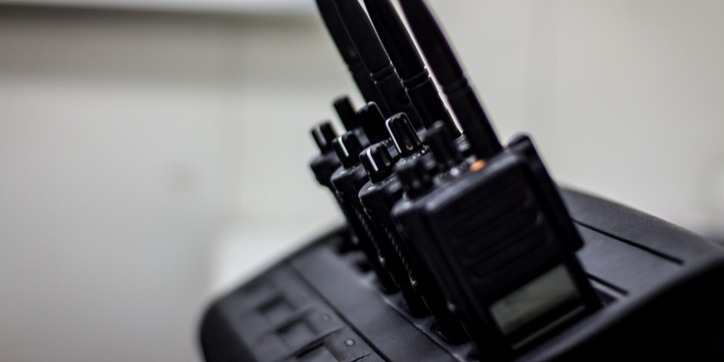Interoperability at the Core
Building Flexible,Scalable Critical Communications Networks In critical communications, interoperability is not just a technical goal—it is the...
3 min read
Leonardo Apr 26, 2017 7:47:00 AM

You are likely familiar with LMR systems based on proprietary technology, where a
single source of supply and planned obsolescence often results in high costs, a lack of choices and limited innovation. To upgrade a proprietary technology to a new LMR system within the proprietary space, you either have to purchase expensive system extensions and equipment or procure a whole new system.
If you’re looking for more flexibility, it’s time to consider solutions that are based on open standards. Here are three key features you must consider for the most reliable and adaptable LMR solution on the market:
With a hardware-centric LMR system, it’s common for specific system functions to be handled by separate, discrete pieces of equipment, including the radio base station, the site trunking controller and the console gateway. If considering a simulcast solution, many suppliers employ separate pieces of equipment for GPS synchronization, system equalization and a voter/comparator. With a software-defined solution, all of those functions are in the radio base station – a system in a box.
Here are a couple of common functionalities that fit into one software-defined LMR solution:
For simulcast, it is particularly important that synchronization be accurate (within 20-30 milliseconds). While a hardware-defined version would need a separate GPS receiver box, a software-defined solution is embedded inside the radio base station “box.”
Overlap areas between sites are typical with simulcast systems. Two or more sites regularly hear a signal. The system must quickly compare the relative strength of the multiple signals received and “vote” which is the best signal to be simultaneously repeated throughout the system. Hardware-centric systems require another box or piece of equipment to perform the voting (or voter/comparator) function. A software-centric solution has the voter capability built into the radio base station.
Simulcast systems need to equalize the delay between sites on the back-haul linking. This is due to varying distances and/or different linking methods (microwave, fiber, etc.). Hardware-centric approaches employ the use of separate pieces of equipment for equalization. With a software-defined LMR solution, bidirectional equalization is adjusted automatically by the equalization function within the radio base station – a system in a box.
Trunking systems require call management at the site level and traffic routing at the system level. Traditionally, LMR manufacturers have added separate, discreet boxes (computers) to provide site control and routing functions at the site level, and then to communicate with centralized circuit switches for call routing between sites. A software-centric solution incorporates site call management and traffic routing as a function within the radio base station, eliminating the need for extra, separate “boxes” – again, a system in a box.
Additionally, software-centric solutions have added flexibility and can be configured to operate as centralized or distributed control for inter-site traffic routing. Centralized control mimics hardware-centric approaches and performs inter-site traffic routing at a central point. This is sometimes required to match customer legacy backhaul capabilities. Distributed inter-site traffic routing offers enhanced system reliability with increased resiliency by eliminating single points of failure. Inter-site traffic control is distributed among the sites.
Also, with hardware, every addition comes with an additional cost. A software-centric LMR solution will feature upfront costs, but the add-ons (even future ones) are built into that cost.
Field applications of technology are rarely homogeneous. Often, a solution that is appropriate for an urban, more densely populated geographic area is unsuitable for a less densely populated region. Typically, the urban solution is force-fit into the rural area, resulting in the application of excess technology with increased capital and operating expenditures.
An urban application may dictate both simulcast architecture and digital trunking (DMR III), while a rural area may call for a multicast architecture and digital conventional (DMR II) technology. Look for multi-mode technology that leverages software-defined devices such that the same radio base station can be configured from DMR II or DMR III and multicast or simulcast, and the operating modes and architectures can be combined into a seamless network that meets your specific application needs.
First-generation trunking products were based on proprietary technology. When it came to new features, consumers were at the mercy of the manufacturer, and were commonly locked in on pricing and user terminals. This closes off innovation.
An open system defined by software naturally offers more features and capabilities. With an open system, you’re free to choose from multiple terminal suppliers and dispatcher application providers. You’re able to tailor a system to meet your needs and not restricted to what a manufacturer has to offer.
An open system also lends itself to built-in obsolescence protection.
Ready to learn more about an LMR solution based on open standards?

Building Flexible,Scalable Critical Communications Networks In critical communications, interoperability is not just a technical goal—it is the...

In today's fast-paced world, having a reliable and robust emergency communication system is crucial for public safety and operational efficiency.
We're thrilled to announce that Leonardo's Jim Collum has been invited to join the prestigious EWA Technical Solutions Committee, a testament to his...